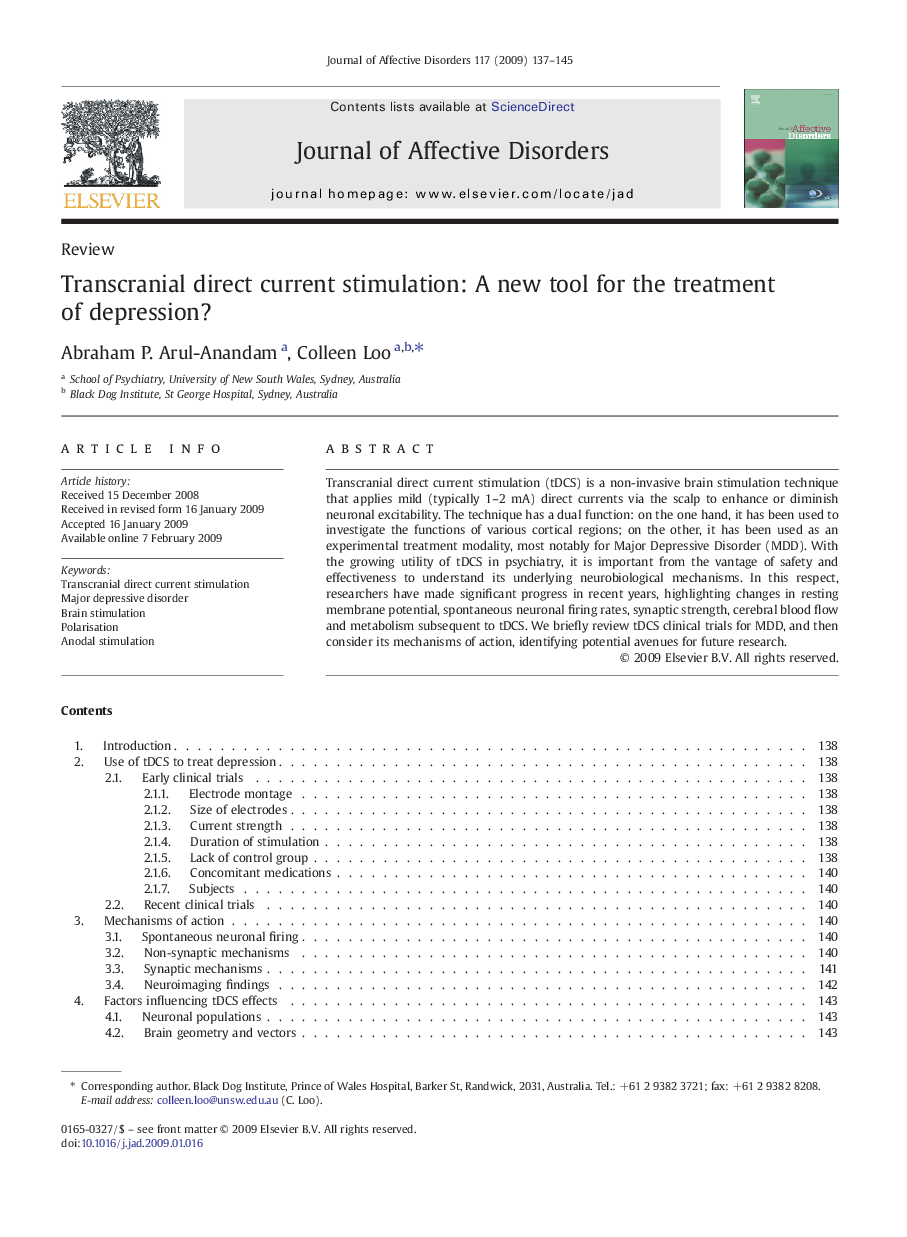| Article ID | Journal | Published Year | Pages | File Type |
|---|---|---|---|---|
| 4187200 | Journal of Affective Disorders | 2009 | 9 Pages |
Transcranial direct current stimulation (tDCS) is a non-invasive brain stimulation technique that applies mild (typically 1–2 mA) direct currents via the scalp to enhance or diminish neuronal excitability. The technique has a dual function: on the one hand, it has been used to investigate the functions of various cortical regions; on the other, it has been used as an experimental treatment modality, most notably for Major Depressive Disorder (MDD). With the growing utility of tDCS in psychiatry, it is important from the vantage of safety and effectiveness to understand its underlying neurobiological mechanisms. In this respect, researchers have made significant progress in recent years, highlighting changes in resting membrane potential, spontaneous neuronal firing rates, synaptic strength, cerebral blood flow and metabolism subsequent to tDCS. We briefly review tDCS clinical trials for MDD, and then consider its mechanisms of action, identifying potential avenues for future research.
